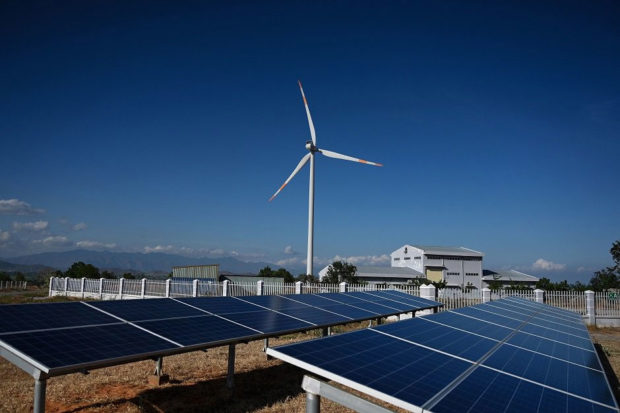
India can hold electricity-sector emissions by increasing clean power capacity: report
PTI, Mar 30, 2021, 9:43 AM IST

Washington: India can hold its greenhouse gas emissions from the electricity sector at 2018 levels by increasing its clean power capacity, according to a Berkeley Lab-led team of researchers.
A new study recently published in the Proceedings of the National Academy of Sciences from researchers at Berkeley Lab, University of California, Santa Barbara, and University of California, Berkeley, shows India can aim even higher with its renewable energy goals.
“By increasing its clean power capacity from the current target of 450 gigawatts within the next decade to 600 gigawatts, the nation can hold its greenhouse gas emissions from the electricity sector at 2018 levels while nearly doubling the supply of electricity to meet economic development needs,” according to a statement on Monday.
The costs, the researchers demonstrated, would be comparable to those of a fossil fuel-dominated grid, the report said, noting that India had set ambitious targets for renewable power, with plans to quintuple its current wind and solar energy capacity by 2030.
India’s transition away from fossil fuels will have a significant impact on global climate efforts since it is the world’s third-largest greenhouse gas emitter, although its per capita emissions are below the global average, it said.
“We found that high renewable energy targets can be cost-effective for India, thanks to falling prices,” UC Santa Barbara assistant professor and Berkeley Lab faculty scientist Ranjit Deshmukh said. “The key to achieving the lowest costs lies in finding the right mix on the electric grid.”
Using computer models, the research team, which also included Duncan Callaway of UC Berkeley, examined the electricity and carbon mitigation costs needed to reliably operate India’s grid in 2030 for a variety of wind and solar targets.
Under current goals, two-thirds of India’s added renewable electricity would come from solar and the rest from wind. But because of India’s weather and electricity demand patterns, a target that leans more heavily on wind power will lead to lower costs, the study found.
India will still need resources to meet electricity demand during times when both sun and wind levels are too low, the researchers noted.
“Costs for energy storage on the grid are falling rapidly, making it a viable option in the near term,” said Amol Phadke, a Berkeley Lab staff scientist. “To avoid investments in new coal power plants, deploying battery storage will be essential.”
Udayavani is now on Telegram. Click here to join our channel and stay updated with the latest news.
Top News

Related Articles More
MUST WATCH
Latest Additions

Delhi govt announces Rs 10 lakh compensation to family of drain accident victim

Jharkhand polls: BJP leading in 39, JMM ahead in 38

Binny Bansal steps down from board of PhonePe

Geethartha Chinthane 102: Self-development vs. self-contraction

Maharashtra assembly polls: Mahayuti leads in 146 seats, MVA ahead in 132
Thanks for visiting Udayavani
You seem to have an Ad Blocker on.
To continue reading, please turn it off or whitelist Udayavani.


























